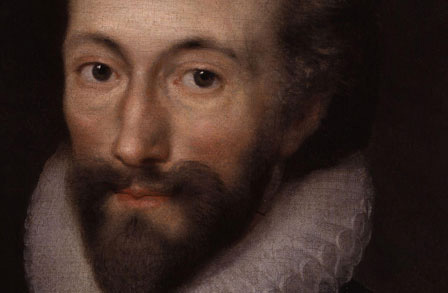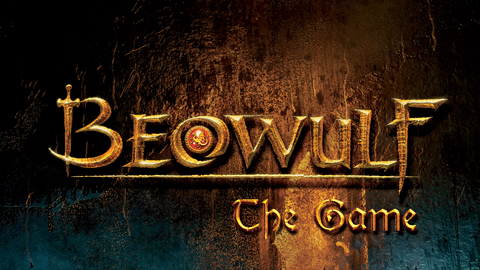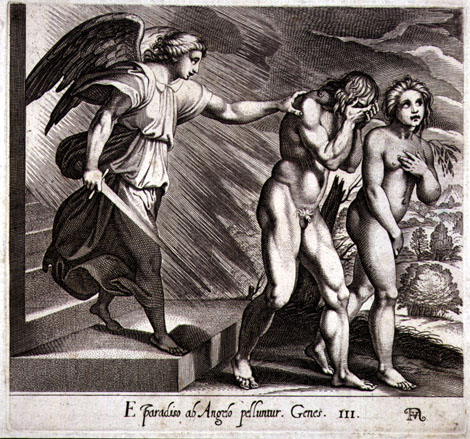Henry Louis Vivian Derozio (18 April 1809 – 26 December 1831), poet, radical thinker, educator, social reformist, founder of the Young Bengal group, was born in India, Kolkata, to Portuguese parents. Known to write brilliant sonnets, he was a renowned scholar in many disciplines, including languages. He regarded himself as an Indian, and this poem is proof of that. Hounded both by the British and the Indian orthodox society, the young radical died young at the age of 22 due to cholera.
It is interesting to note that Derozio, in spite of being a European sang for India, and this poem, in its lamentation, gives us proof enough of his sincerity towards the country.
To India – My Native Land: Summary
Lamenting the loss of the glorious past of India, which was full of riches, both spiritual and material, the poet narrates how the country has come to be tied down by the foreign powers. The poet determines to fetch such long-lost memorable moments of Indian glory which have hitherto been hidden from the world’s eyes only to reinstate once more the glory of India. ‘In thy days of glory past’ refers to the bygone age of Indian supremacy as a civilization rich in all resources. This could refer to the period starting from the Harrapan age down to the great Mughal period. ‘Halo’ refers to the mythical ring of light that surrounds angels’ heads. It refers to the angelic quality of India. In ‘eagle pinion,’ India has been compared with an eagle that the British power has chained. ‘Lowly dust’ refers to the pitiful condition of the country post its domination by Britain. ‘Minstrel’ refers to a singer. Here it could mean the national poets/ historians who write poem histories of a country, often glorifying it. ‘Guerdon’ signifies the reward of labor. Here the poet wants to receive the reward of ‘one kind wish’ of his beloved country for his labor to salvage some ‘wrecks sublime,’ which means the patches of Indian glory stuck in time and forgotten history, which is itself signified by the phrase ‘depths of time.’
To India – My Native Land: Theme
The theme of the poem is pretty simple and straightforward. It deals with the frustration at the contemporary condition of the country, which has been rendered weak and insulted at the hands of the foreign onslaught. It is a poignant lament. It is a true cry from the heart. The poem also suggests the poet’s desire to bring out some long-lost glorified past of the country.
To India – My Native Land: Tone
The patriotic tone of the poem is but obvious. It’s sad but with a desire to do something in order to improve the condition. It is indeed a very simple sonnet with clear-cut divisions between the octet and sestet. The octet deals with the fallen condition of the native land as opposed to its erstwhile greatness. Contrast has been instituted between Derozio’s India and India of the bygone age. In the sestet, which concludes with a couplet, a resurgence in emotion happens, which spurs the poet to try to salvage a portion of the lost glory by digging into the past of the nation and bring back some glorious memento to show the world and its own people so that some amount of the past self-respect is restored. As it happens with great poems or any piece of great literature that the best of styles lies in the stylelessness, the same comes true for this poem. The best of art conceals art. The poem does not yield anything too sophisticated stylistic analysis. In its simplicity, it makes one of the most potent style statements, i.e. – ‘look into thy heart and write’ (the poetic creed of Sir Philip Sydney as expressed in his poem, Loving in Truth.) The style is commensurate with the theme and execution of the poem. As mentioned already, the sonnet is a heartfelt cry at the pitiable condition of India and thus allows no room for pretensions. In fact, the poem being a sonnet aptly conveys the sharp and shrill response of pain in the poet’s heart.
To India – My Native Land: Analysis
Now, we can look a little deeper into the text to find something that the casual chauvinistic attitude might hold back from our view. If we expose the lines of the poem, especially the sestet, to a deconstructive reading, then we will find that the meaning of the text takes a very regressive view. This regressive view of the poem can form a parallel with the kind of dependence on the glorification of the history of India, which was taken up by the Hindu nationalists like Bal Gangadhar Tilak, Lala Lajpat Rai, etc. These nationalists relied on the so-called glory of India’s past to generate the much-needed morale boost for the Indians who had lost their self-respect under the humiliating rule of the English. In order to break free from the hegemony of the English, the Indian nationalists turned to a ‘brave old world’ as a counter-discourse to the hegemonic discourse of the English that portrayed us as effeminate and weak. Now, if we take up the lines – “Well let me dive into the depths of time, /And bring from out the ages that have rolled/A few small fragments of those wrecks sublime.” we find that Derozio is also indulging in the rhetoric of regression to counter the hegemonic propaganda of the English. This, while bringing back the confidence of the native people in their own culture and history, has its own danger of making our stay in our glorified past and neglect both our present and future. Thus instead of looking ahead (the poet doesn’t do that in any line of the poem), he constantly harps back continuously to the lost past. Again more disturbing is the fact that Derozio claims that the ‘wrecks sublime’ which he will bring back from the past will no more be seen by the world. This signifies that India will never reach glory once more. The poet seems to fix India in a stereotype of fallenness. Thus is in his eulogy, he actually presents a stagnating picture of the country he loves. The English have forever called us a country bound in its past. In fact, many pro-colonial writers and travelers have described India as a land of timelessness.
In the light of the preceding argument, we find the images highly ambivalent. The halo talked about in the second line signifies the angelic appearance of the motherland. From a patriarchal chauvinistic approach, we find the image quite in line with the then description of the motherland as an angel, which is in contrast even with the fighter image of the country which the freedom fighters like Rani Lakshmibai portrayed and which the radical freedom fighters like Bhagat Singh, Chandrashekhar Azad wanted to uphold. The image of the deity with the halo is again a mythical image that reminds us of the discussion made above. Today we Indians would like to portray our country as a superpower not with a halo on her head but with the weapons of economic, social, and political change and up-gradation. The image of the eagle being chained is also significant on two levels; first, that India has been compared with a bird of prey that has lost its strength, and secondly, that the ‘better’ civilization has tamed the wild bird. In fact, Rudyard Kipling had mentioned that it was the burden of the white men to ‘civilize’ the third world countries (erstwhile colonies). As Benita Perry finds out that Edward Said has not mentioned the resistance that the colonies offered to the colonial onslaught in his book Orientalism, the poet forgets to mention the constant struggle in the image of the groveling eagle of the eagle to break free from the bounds. Derozio perhaps doesn’t appreciate the numerous poems, pamphlets, and other literature that tries to awake the revolutionary consciousness of the Indian mass and thus the image of the minstrel, who has nothing to sing of India but only the laments of misery. The images of India as nothing but sublime wrecks and land lost in the depths of time and a place where ages have rolled by are significant of the stereotypical image of India.
As pointed out earlier, the simplicity of the poem doesn’t allow for too much rhetorical ornamentation yet the personification of India, the apostrophe at the beginning of the poem, the vision of India as a deity, the interrogation in the fourth line, the alliteration in the 7th, the metaphors of history, time and glory have their own unique place in the poem. They embellish the content as well as adding to the formal shine of the lyric.
Thus we find that the poem though short in length, just like the life of the poet, is full of significance which still holds good in our contemporary world where India is still pinioned if not by foreign forces but with our internal squabbles of petty politics, religion, casteism, and poverty.
Some online learning platforms provide certifications, while others are designed to simply grow your skills in your personal and professional life. Including Masterclass and Coursera, here are our recommendations for the best online learning platforms you can sign up for today.
The 7 Best Online Learning Platforms of 2022
- Best Overall: Coursera
- Best for Niche Topics: Udemy
- Best for Creative Fields: Skillshare
- Best for Celebrity Lessons: MasterClass
- Best for STEM: EdX
- Best for Career Building: Udacity
- Best for Data Learning: Pluralsight

















This summary was realy very helpful to me.i can write all the answers based on the summary.
This summary was realy very helpful to me.i can write all the answers based on the summary.thank you…:):D;)
Thank u sir….V feel honoured to have teachers like u in our country.The summary written is very nice and is very helpful …Thank u
indeed a very good analysis of the poem… even as a postcolonial reading of the poem..
Thank u sir ….very helpful in understanding the poem.